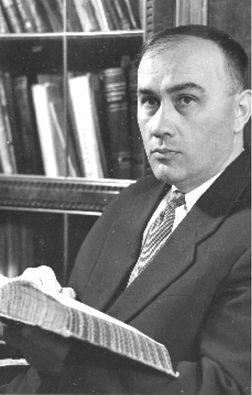
The following is an incomplete list of masters of Georgian calligraphy:

The following is an incomplete list of masters of Georgian calligraphy:
|
|
|
|
|
|
|

Calligraphy is a visual art related to writing. It is the design and execution of lettering with a pen, ink brush, or other writing instrument. Contemporary calligraphic practice can be defined as "the art of giving form to signs in an expressive, harmonious, and skillful manner".

Western calligraphy is the art of writing and penmanship as practiced in the Western world, especially using the Latin alphabet.

Imedi Media Holding is a private television and radio company in Georgia. The stations were founded by the Georgian media tycoon Badri Patarkatsishvili. The station mainly concentrates on news and analytical coverage but broadcasts pop music as well, particularly at night-time. Imedi means "hope" in Georgian.
The mass media in Georgia refers to mass media outlets based in the Republic of Georgia. Television, magazines, and newspapers are all operated by both state-owned and for-profit corporations which depend on advertising, subscription, and other sales-related revenues. The Constitution of Georgia guarantees freedom of speech. Georgia is the only country in its immediate neighborhood where the press is not deemed unfree. As a country in transition, the Georgian media system is under transformation.

Besarion Zakarias dze Gabashvili, commonly known by his pen name Besiki, was a Georgian poet, politician and diplomat, known as an author of exquisite love songs and heroic odes as well as for his political and amorous adventures.

Giorgi Aleksandresdze Melikishvili was a Georgian historian known for his fundamental works in the history of Georgia, Caucasia and the Middle East. He earned international recognition for his research on Urartu.

George the Hagiorite was a Georgian monk, calligrapher, religious writer, theologian, and translator, who spearheaded the activities of Georgian monastic communities in the Byzantine Empire. His epithets Mt'ats'mindeli and At'oneli, meaning "of the Holy Mountain" (Hagiorite) and "of Athos" respectively, are a reference to his association with the Iviron monastery on Mount Athos, where he served as hegumen.

The Contemporary Museum of Calligraphy, dedicated to the art of calligraphy, is situated in Sokolniki Park, Moscow. The museum collection features calligraphy masterpieces from 65 countries. The concept was elaborated by Sokolniki Exhibition and Convention Centre and the National Union of Calligraphers. The museum was officially opened on August 14, 2008.

International Exhibition of Calligraphy — a project organized by Contemporary museum of calligraphy, with the support of the Museum-educational complex Sokolniki. Its aim is the promotion of the art of calligraphy and its educational significance through exhibitions and festivals.

Giorgi Leonidze State Museum of Literature, Georgia was founded in 1930 upon the initiative of David Arsenishvili, a legendary museum-founder, who also was the creator of Tbilisi Theater Museum, and later the famous Andrej Rublow museum in Moscow.
Georgian calligraphy is a form of calligraphy, or artistic writing of the Georgian language using its three Georgian scripts.
Martyrius the Iberian was a Georgian calligrapher, monk and writer of the 6th century.
Michael Modrekili was a Georgian calligrapher, writer and scholar of the 10th century. He was also an anthologist, an expert in the liturgy, musicologist and a poet.
Giorgi Dodisi was a Georgian calligrapher of the 12th century.

A khelrtva is a Georgian calligraphic signature, monogram or seal, originally used by the Georgian monarchs, queens consort, patriarchs, royalty and nobility, universally used since the early eleventh century.
Davit Aleksidze-Meskhishvili, "the Rector", was a Georgian pedagogue, calligrapher, and rector of the Telavi seminary from 1790 to 1801.

George Melashvili is a public figure, scholar of political sciences and East Asian studies, and a civic activist who is the founder and president of the Europe-Georgia Institute, a hybrid non-governmental organization in Georgia since September 2016.

Benito Mikheili Buachidze was a Georgian literary critic. He was a member of the SCCP since 1926. He was the brother of Kita Buachidze.

The unification of the Georgian realm was the 10th-century political movement that resulted in the consolidation of various Georgian crowns into a single realm with centralized government in 1008, the Kingdom of Georgia, or Sakartvelo. Originally initiated by the powerful local aristocracy of the eristavs, due to centuries-long power struggles and aggressive wars of succession between the Georgian monarchs, arising from their independent ruling traditions of classical antiquity and its Hellenistic-era monarchical establishments in Colchis and Iberia. The initiative was supported by David III the Great of the Bagrationi dynasty, the most powerful ruler in the Caucasus at the time, who would put prince royal Bagrat, his kin and foster-son, on Iberian throne, who would eventually be crowned as a King of all-Georgia. David's Bagratid successors would become the champions of national unification, just like the Rurikids or the Capetians, but despite their enthusiasm, some of the Georgian polities that had been targeted for unification did not join the unification freely and would actively fight against it throughout this process, mostly seeking help and support from the Byzantine Empire and the Abbasid Caliphate. Even though, 1008 unification of the realm would unite most of western and central Georgian lands, the process will continue to the east, and eventually, would reach its total completion under King David IV the Builder. This unprecedented political unification of lands and the meteoric rise of Bagrationi power would inaugurate the Georgian Golden Age and creation of the only medieval pan-Caucasian empire attaining its greatest geographical extent, that would dominate entire Caucasus in the 11th, 12th, and 13th centuries. The centralizing power of the crown started to weaken in the 14th century, and even though the tide turned back under King George V the Brilliant, the reunification came up to be short-lived; unified realm would evaporate after invasions of Mongols and Timur that would result in its total collapse in the 15th century.

Heraclius Alexandres dze Djabadary was a Georgian composer and pianist who was active throughout Europe up until the 1930s.